How To Grow Banana Tree: A Comprehensive Cultivation Guide
- February 19, 2024
- 7 comment
Banana trees, known for their lush, tropical appeal and sweet fruits, are a rewarding addition to any garden. This guide aims to provide comprehensive insights into the process of growing a banana tree, from planting to harvesting.
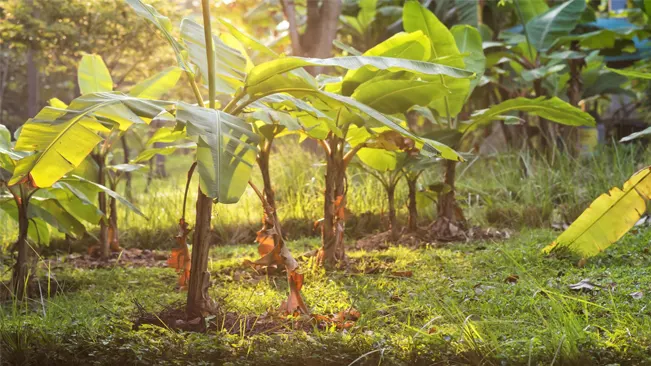
| Nutrient or Benefit | Description and Benefits |
|---|---|
| Potassium | Essential for heart health and blood pressure control. High potassium intake is linked to reduced risk of heart disease. |
| Vitamin C | Important for immune function and skin health. Vitamin C is also an antioxidant that helps combat oxidative stress. |
| Vitamin B6 | Crucial for brain health and metabolism. Vitamin B6 helps in the production of neurotransmitters like serotonin. |
| Dietary Fiber | Aids in digestive health by regulating bowel movements and preventing constipation. Fiber also promotes feelings of fullness, aiding in weight management. |
| Energy Boosting | Natural sugars like sucrose, fructose, and glucose provide a quick and substantial energy boost, making bananas ideal for athletes and as a snack for sustained energy. |
| Mood Enhancement | Contains tryptophan, which is converted into serotonin in the body, a neurotransmitter that promotes relaxation and improves mood. |
| Bone Health Support | While not high in calcium, bananas aid in calcium absorption through their prebiotic fructooligosaccharides, indirectly supporting bone health. |
| Antioxidants | Source of antioxidants like dopamine and catechins, which reduce the risk of heart disease and degenerative illnesses. |
| Blood Sugar Control | Low to medium glycemic index; pectin and resistant starch in bananas help moderate blood sugar levels post-meals and reduce appetite by slowing stomach emptying. |
| Skin Health | Rich in vitamin C and manganese. Vitamin C is vital for collagen production, while manganese protects the skin against free radical damage. |
Choosing the Right Variety for Your Area
When selecting a banana variety, consider your local climate and the space available. If you’re in a cooler climate, consider varieties like the Dwarf Cavendish or Blue Java, which can tolerate some cold. For warmer climates, options are more varied. Additionally, consider the size of the plant and the type of banana you prefer (dessert bananas like the Cavendish or cooking bananas like plantains).
Cavendish Bananas
These are the most common commercial bananas, often seen in grocery stores. They are known for their robustness and disease resistance.
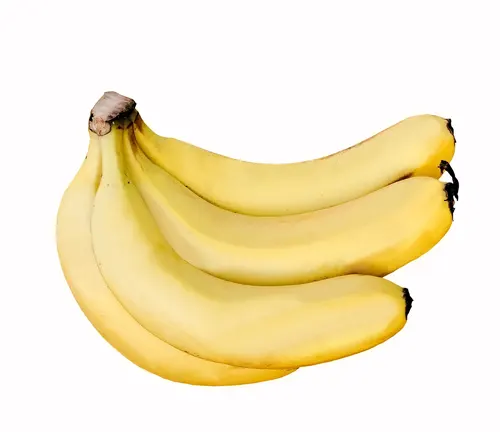
Lady Finger Bananas
Smaller and sweeter than Cavendish bananas, these are popular in home gardens and have a thinner skin.
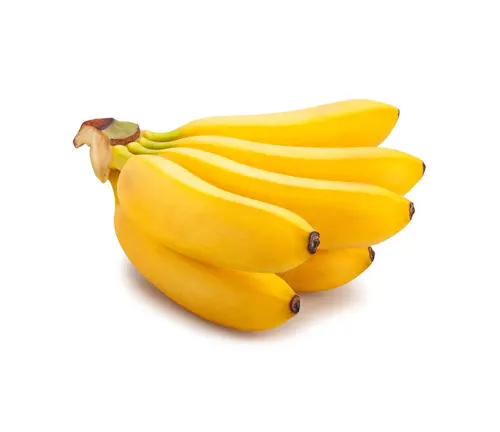
Red Bananas
Characterized by a red or purple skin when ripe, red bananas are sweeter and creamier than the Cavendish variety.
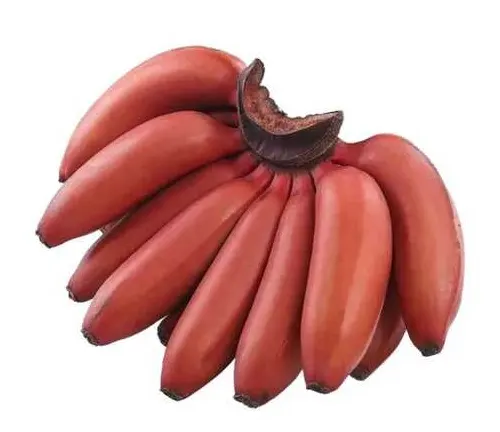
Plantains
Although they look like bananas, plantains are starchier and are usually cooked before eating. They are a staple food in many tropical regions.
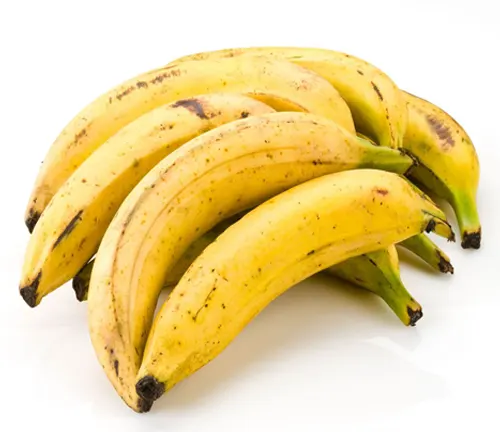
Blue Java Bananas
Known for their unique blue-tinged peels and ice cream-like texture and flavor, these bananas are a gourmet variety.

Manzano Bananas
Also known as the “apple banana,” they are smaller and have a taste reminiscent of apples or strawberries when ripe.
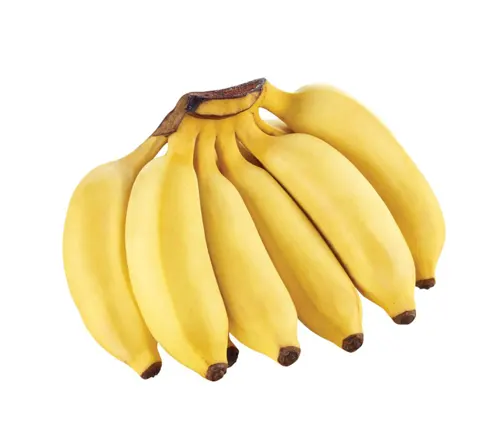
Climate Conditions for Banana Trees
Banana trees thrive in tropical and subtropical climates but can be grown in temperate areas with some care. Here are key climate considerations:
- Temperature: Bananas grow best in temperatures ranging from 75°F to 85°F (24°C to 29°C). They can tolerate, but not thrive in, cooler temperatures down to about 57°F (14°C). Temperatures below this can harm the plant.
- Sunlight: They require full sun or light shade. Around 12 hours of sunlight per day is ideal for optimal growth.
- Rainfall: Bananas need a lot of water but also well-draining soil. They thrive in areas with regular rainfall but can also be grown in drier climates if irrigated properly.
- Wind: They are sensitive to strong winds, which can tear their large leaves, so a sheltered location is preferable, especially in windier areas.
- Soil: The soil should be fertile, deep, and well-drained. Banana plants do poorly in waterlogged soil.
Preparing for Planting
Selecting the Perfect Spot
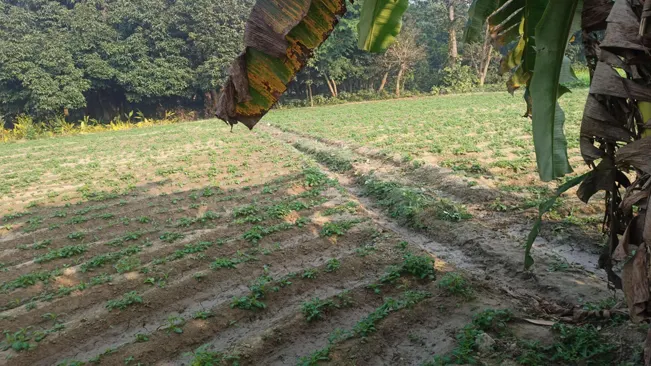
- Sunlight: Banana trees thrive in areas that receive full sunlight. They need around 6-12 hours of direct sunlight daily. Choose a spot in your garden that is not shaded by other trees or buildings.
- Wind Protection: Although they need sunlight, banana trees are susceptible to damage from strong winds. A location shielded from strong winds or gusts will protect your tree from getting uprooted or its leaves from tearing.
- Drainage: Good drainage is essential. Banana trees do not perform well in waterlogged soil. Ensure the chosen spot has well-draining soil to prevent root rot.
- Space: Banana trees can grow quite large. Ensure there is ample space for the tree to grow, both in height and width. A spacing of 2-3 meters (6-10 feet) between trees is ideal if you’re planting more than one.
Preparing the Soil
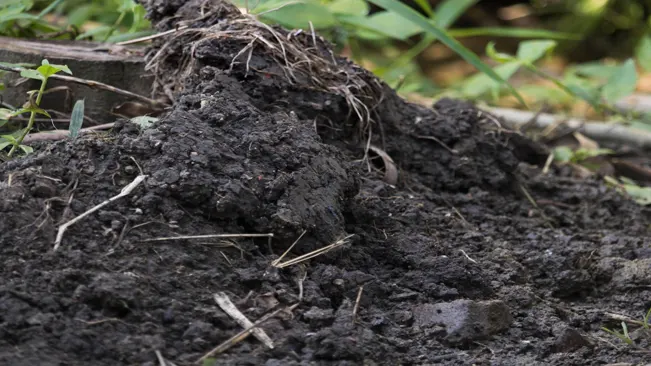
- Soil Type: Banana trees prefer a loamy, well-draining soil. The ideal pH for the soil is slightly acidic to neutral (pH 5.5 to 7.0).
- Organic Matter: Enriching the soil with organic matter is beneficial. Adding compost or well-rotted manure can provide the nutrients necessary for the tree’s growth.
- Soil Preparation: Loosen the soil to a depth of about 2 feet to allow the roots to penetrate and spread easily. If the soil is clayey or has poor drainage, consider raising the planting area or using raised beds.
- Initial Fertilization: While preparing the soil, you can also mix in a balanced fertilizer (like a 10-10-10 NPK) to give your banana tree a good start. However, be cautious not to over-fertilize, as this can harm the young plant.
- Mulching: After planting, apply a layer of mulch around the base of the tree. This helps in retaining moisture, suppressing weeds, and adding organic matter to the soil as it decomposes.
Planting Your Banana Tree
A step-by-step guide on how to plant your banana tree, including the best season for planting to ensure optimal growth.
Choosing the Right Time
- Best Season: The ideal time to plant a banana tree is during the warmer months, typically in spring or early summer. This gives the plant ample time to establish itself before the cooler weather sets in.
- Climate Consideration: In tropical or subtropical climates, planting can be done year-round, but avoid periods of heavy rainfall or extreme heat.
Selecting a Suitable Location
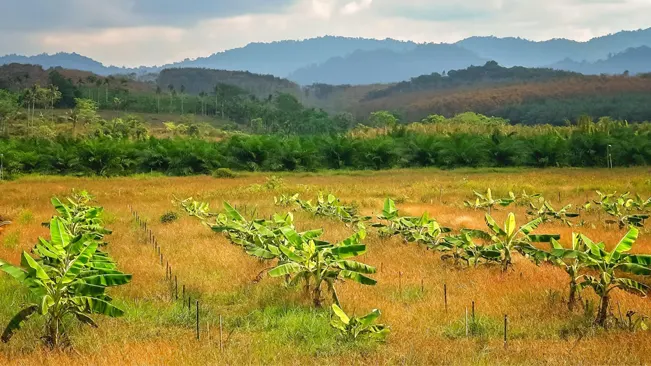
- Sunlight Requirements: Choose a location that receives full sun for at least 6-8 hours a day. Banana trees thrive in bright, direct sunlight.
- Protection from Wind: Select a spot that is sheltered from strong winds, as banana trees have large leaves that can be easily damaged.
Soil Preparation
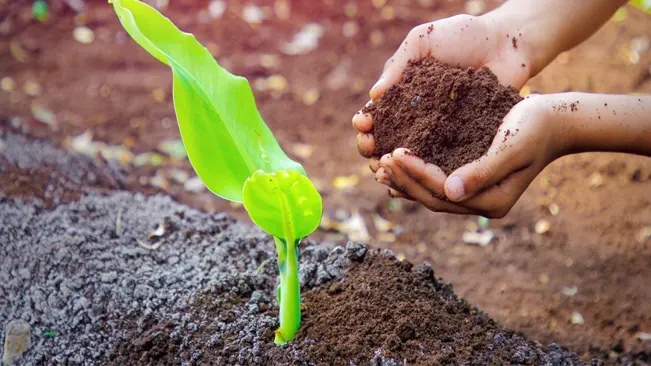
- Soil Type: Banana trees prefer well-draining soil rich in organic matter. If your soil is heavy or clayey, consider amending it with compost or well-rotted manure to improve drainage.
- pH Level: Aim for a soil pH between 5.5 and 7.0. You can test the soil pH using a home testing kit.
Planting the Banana Tree
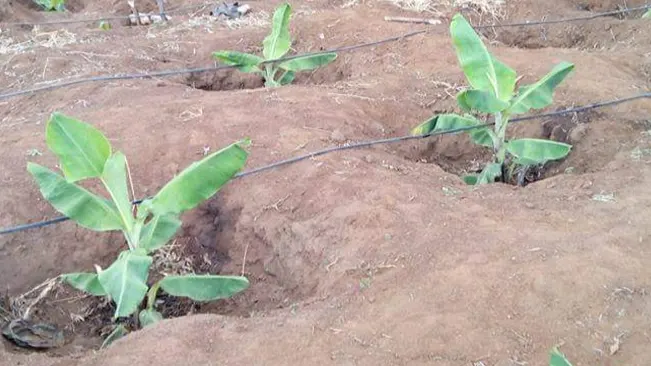
- Digging the Hole: Dig a hole twice as wide and just as deep as the root ball of your banana plant.
- Positioning the Plant: Carefully remove the banana plant from its container and place it in the hole. The top of the root ball should be level with the soil surface.
- Backfilling: Fill the hole with soil, gently firming it down around the base of the plant to remove air pockets.
- Watering: Water the plant thoroughly after planting to settle the soil and provide moisture to the roots.
Mulching
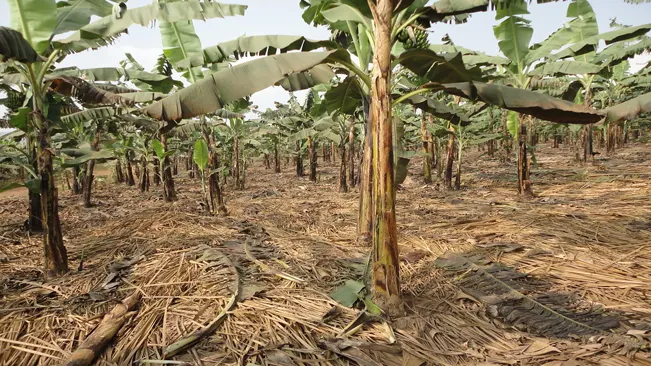
- Apply Mulch: After planting, apply a 2-3 inch layer of organic mulch around the base of the plant. This helps retain moisture, suppress weeds, and keep the roots cool.
- Avoid the Trunk: Keep the mulch a few inches away from the trunk to prevent rot.
Initial Care
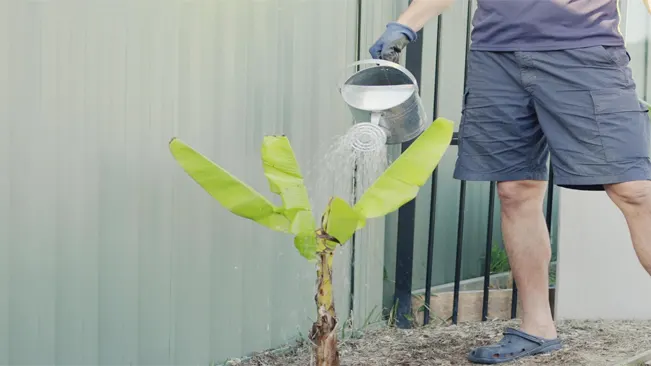
- Watering: Water the plant regularly, especially during dry periods, to keep the soil consistently moist but not waterlogged.
- Fertilizing: Apply a balanced fertilizer monthly during the growing season to promote healthy growth. Use a fertilizer formulated for fruit trees or tropical plants.
Pest and Disease Management
Common Pests Affecting Banana Trees
Nematodes
These tiny soil-dwelling worms can cause root damage, leading to reduced plant vigor and yield. Management includes using nematode-resistant varieties, practicing crop rotation, and applying organic matter to improve soil health.
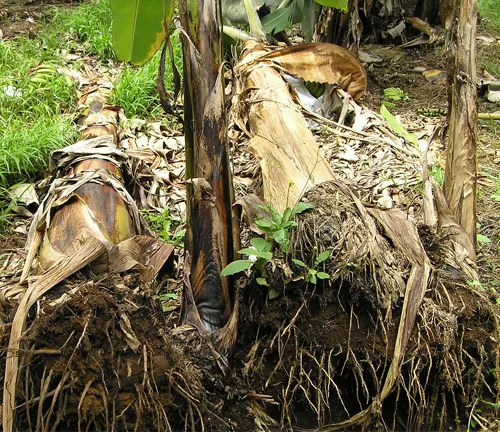
Banana Weevil Borer
This pest burrows into the stem, weakening the plant. Control methods include removing and destroying affected plant parts and using pheromone traps to monitor and reduce their population.
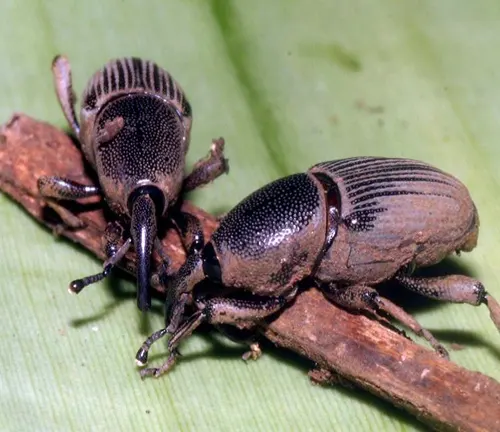
Banana Aphid: Aphids can spread Banana Bunchy Top Virus (BBTV). Controlling aphids involves using natural predators like ladybugs, applying insecticidal soaps, or using neem oil sprays.
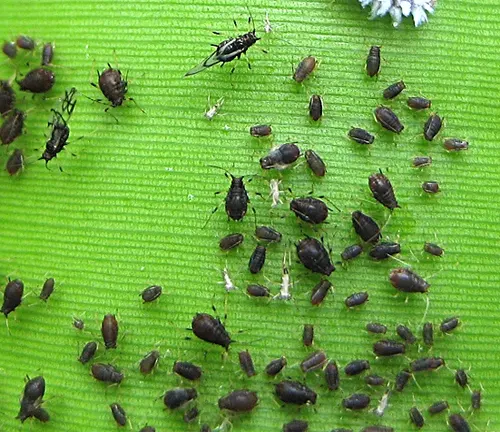
Common Diseases Affecting Banana Trees
Panama Disease (Fusarium Wilt)
Caused by soil-borne fungi, this disease leads to wilting and death of the plant. It’s managed by planting resistant varieties, ensuring proper drainage, and avoiding the movement of contaminated soil.
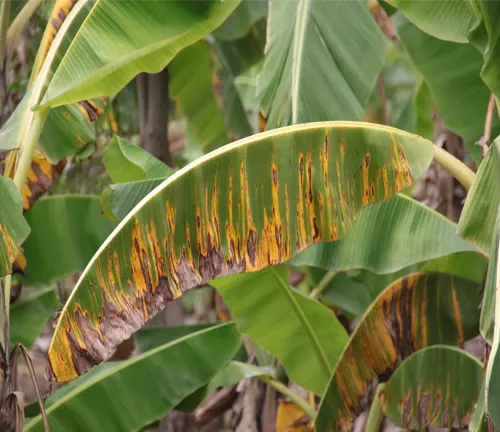
Black Sigatoka
This fungal disease causes leaf spots and reduced fruit quality. Management includes maintaining proper spacing between plants for air circulation, removing affected leaves, and using fungicides if necessary.
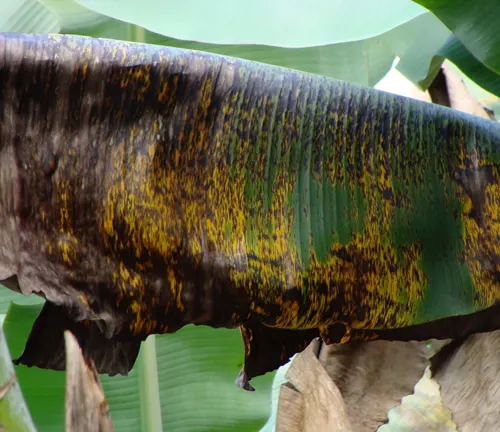
Banana Bunchy Top Virus (BBTV)
Characterized by stunted growth and deformed leaves. The best approach is to use virus-free planting material and destroy any infected plants to prevent spread.
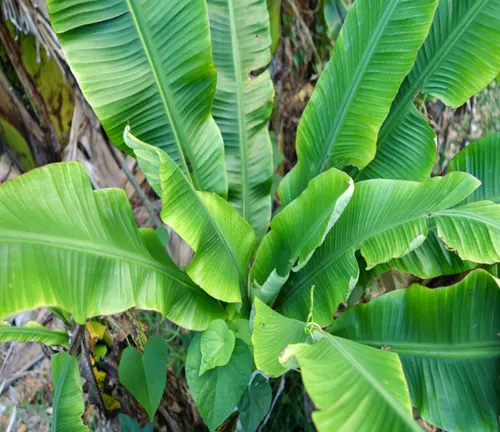
Preventative Measures
- Good Cultural Practices: Regularly inspect plants, maintain cleanliness in the plantation, and remove any plant debris that can harbor pests or diseases.
- Soil Health: Healthy soil promotes strong plant growth, making them less susceptible to pests and diseases. Use compost and other organic matter to enrich the soil.
- Quarantine New Plants: Always quarantine new plants before introducing them to your garden to prevent the spread of pests and diseases.
- Integrated Pest Management (IPM): IPM involves using a combination of cultural, biological, and chemical methods to manage pests and diseases in a sustainable way.
Treatment Strategies
- Biological Controls: Utilize natural predators or beneficial microorganisms to control pests and diseases.
- Chemical Controls: Use pesticides and fungicides judiciously, and only as a last resort. Opt for eco-friendly and organic options when available.
- Physical Removal: Manually remove and destroy infected plant parts to prevent the spread of disease.
Pruning and Maintenance
The best time to prune a banana tree is during its active growth period, typically in late spring or early summer. Pruning should also be done after the harvest, as this is when the tree is preparing for new growth.
How to Prune
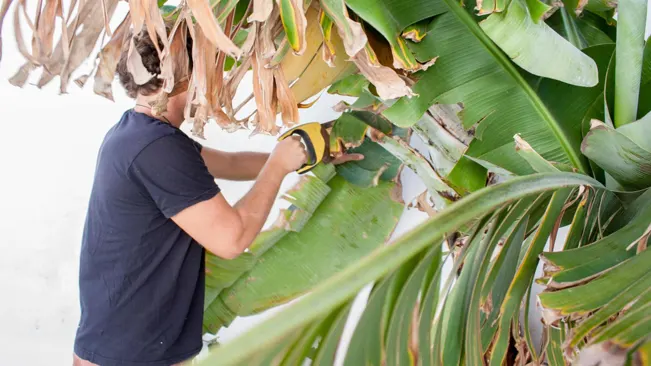
- Remove dead or damaged leaves regularly to maintain the health and appearance of the tree. This also helps in preventing diseases and pests.
- After the banana tree has fruited, the main stalk that bore the fruit will not produce again. Cut this stalk down to the ground to allow new shoots (suckers or pups) to grow.
- When cutting the stalk, use a sharp, clean knife or pruning shears to make a clean cut without damaging the surrounding stalks.
Sucker Management
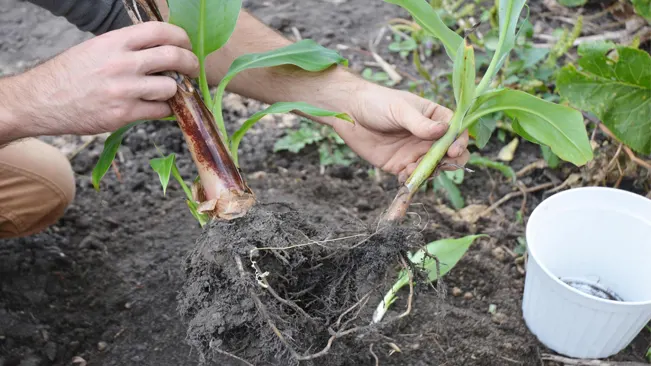
- Banana trees produce several suckers or pups. To encourage healthy growth, allow only one or two strong suckers to remain and grow as new main stalks.
- Remove additional suckers to prevent overcrowding and competition for nutrients.
Harvesting Bananas
Signs That Bananas are Ripe and Ready to Harvest
Color Change

- One of the most obvious signs of ripeness in bananas is the change in color. Unripe bananas are typically a bright green, which gradually turns to yellow. When you notice the bananas turning yellow with brown spots, they are usually ripe and sweet.
Firmness
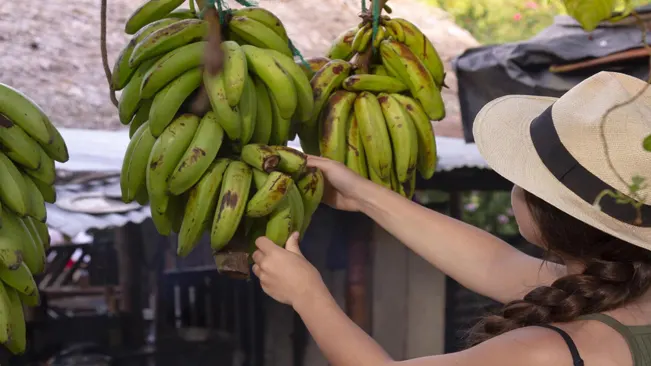
- Gently squeeze the bananas. Ripe bananas will have a slight give to them, whereas unripe bananas will feel hard.
Size and Plumpness
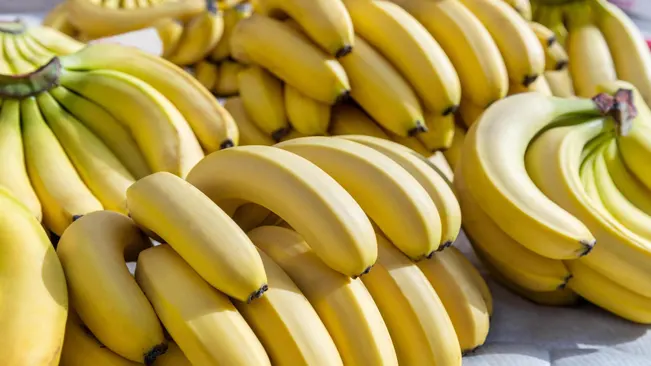
- Over time, bananas fill out and become plump. A ripe banana will look full and rounded, as opposed to the more angular shape of an unripe one.
Separation from the Bunch
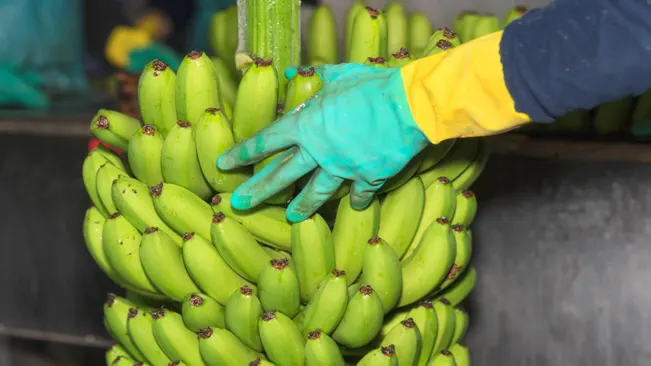
- When bananas are ripe, they begin to detach easily from the bunch. If the bananas come away with a gentle pull, they are likely ready for harvest.
- Fragrance
Ripe bananas emit a sweet, fragrant aroma. If you detect this smell, it’s a good indicator that the bananas are ripe.
Correct Techniques for Harvesting Bananas
- Use a Sharp Knife or Secateurs: To harvest bananas, use a sharp knife or secateurs. Clean and sharp tools help ensure a clean cut, which is less damaging to the tree and the fruit.
- Cut the Whole Bunch: It’s common to harvest the entire bunch at once. Cut the stem of the bunch a few inches above the top banana. Be careful as a full bunch can be quite heavy.
- Support the Bunch: When cutting the bunch, be sure to support its weight to prevent it from falling and getting bruised or damaged.
- Harvest in the Morning: It’s best to harvest bananas in the cool of the morning to avoid the heat of the day, which can affect the quality of the fruit.
- Handle with Care: Bananas bruise easily. Handle them gently when placing them in a container or moving them.
- Ripening After Harvest: If harvested while still a bit green, bananas will continue to ripen off the tree. You can store them in a cool, shaded place to ripen gradually.
Propagating Banana Trees
Pup Division
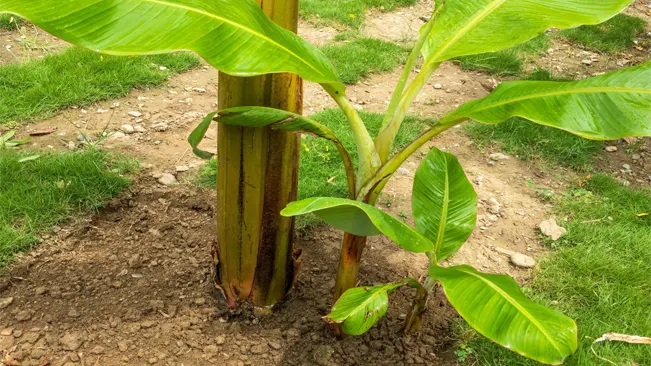
- Description: Banana trees produce shoots or ‘pups’ from the base of the main stem. These can be separated and replanted to grow new trees.
- Procedure:
- Identify a healthy pup that has its own roots.
- Carefully dig around the pup, ensuring you don’t damage the main tree or the pup’s roots.
- Sever the connecting rhizome from the main tree using a sharp, clean tool.
- Transplant the pup into well-prepared soil, ensuring it’s well-watered and in a suitable climate.
- Tips:
- Choose pups that are about one-third the size of the mother plant for the best success.
- Avoid damaging the pup’s roots during transplantation.
Tissue Culture
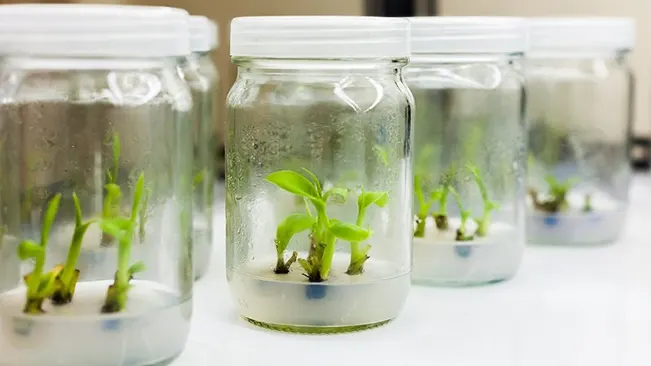
- Description: This is a more advanced method involving growing banana plants from small tissue pieces in a controlled, sterile environment.
- Procedure:
- Small pieces of banana tissue are collected in a sterile environment.
- These tissues are placed in a growth medium with nutrients and hormones to encourage growth.
- Once the tissues develop shoots and roots, they are transferred to pots and eventually to the ground.
- Tips:
- This method requires specialized knowledge and equipment.
- It’s often used for commercial propagation due to its efficiency and the ability to produce disease-free plants.
Corm Cutting
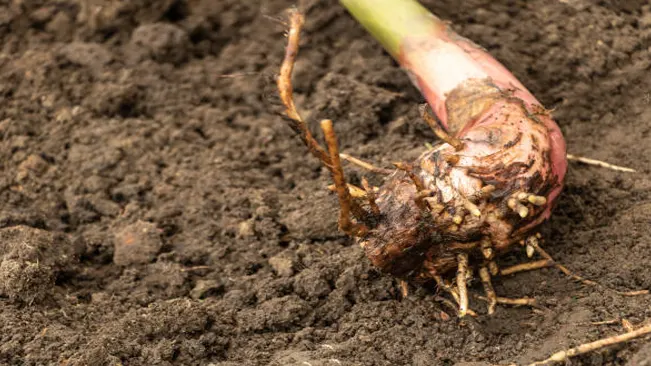
- Description: This involves cutting a piece of the main corm (the underground stem) to grow a new plant.
- Procedure:
- Cut a healthy piece of the corm with a clean, sharp tool.
- Ensure the corm section has at least one eye (growth point).
- Plant the corm section in suitable soil, covering it with a few inches of soil.
- Tips:
- Make sure the cut section is not too small; a larger piece increases the chances of successful growth.
- Keep the soil moist but not waterlogged.
Suckers
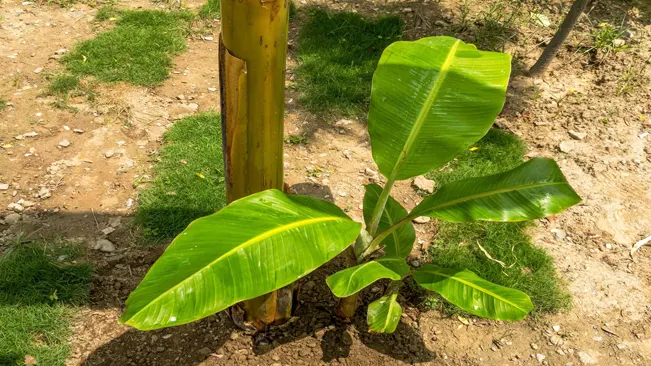
- Description: Similar to pup division, but in this case, suckers or smaller shoots are used.
- Procedure:
- Identify a healthy sucker that has started to develop its own roots.
- Gently separate the sucker from the main plant, preserving as much of the root system as possible.
- Plant the sucker in a well-prepared location.
- Tips:
- Suckers should be robust and green for the best results.
- Ensure they are planted at the same depth as they were growing previously.
General Tips for Successful Propagation
- Soil Preparation: Ensure the soil is well-drained, rich in organic matter, and of the correct pH level (slightly acidic to neutral).
- Watering: Keep the soil consistently moist but not waterlogged, especially during the early stages of growth.
- Location: Choose a location with ample sunlight and protection from strong winds.
- Fertilization: Use a balanced fertilizer to provide the necessary nutrients for growth.
- Monitoring: Regularly check for pests and diseases, as young plants are more susceptible.
Environmental Benefits
- Carbon Sequestration: Banana trees absorb carbon dioxide and release oxygen, aiding in the reduction of greenhouse gases.
- Soil Health and Erosion Control: Their extensive root systems stabilize soil and prevent erosion, while their fallen leaves enhance soil fertility.
- Biodiversity: Planting banana trees supports various wildlife, contributing to a balanced ecosystem and natural pest control.
- Water Conservation: They efficiently use water and help cool their surroundings, beneficial in urban heat islands.
- Sustainable Farming Practices: Banana trees are ideal for intercropping in mixed farming systems, improving land use and farm health.
- Reduction of Chemical Inputs: Organic cultivation of banana trees decreases the need for chemical fertilizers and pesticides, promoting healthier soils.
- Recycling Nutrients: Decomposing leaves and plant parts naturally fertilize the soil, reducing synthetic fertilizer needs.
- Climate Resilience: Banana trees are adaptable to various climates, offering a reliable food source in uncertain weather conditions.
- Supporting Pollinators: Their flowers attract bees and birds, crucial for the pollination of many plants and overall ecosystem health.
- Educational and Community Value: Growing banana trees in community spaces offers educational opportunities about sustainable agriculture and ecology.
Incorporating Bananas in Diet
Breakfast Dishes
Banana Pancakes: Mash bananas and mix them into your pancake batter for a naturally sweet and moist texture.
Smoothies: Combine bananas with other fruits, milk or yogurt, and a handful of greens for a nutritious smoothie.
Oatmeal: Slice bananas and add them to your morning oatmeal along with a sprinkle of cinnamon and nuts for a hearty breakfast.
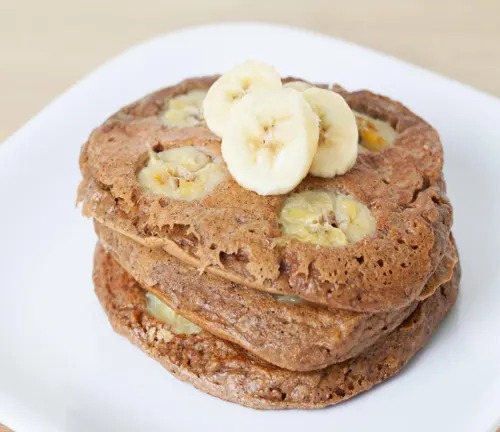
Baking
Banana Bread: A classic favorite, banana bread is a great way to use overripe bananas. Add nuts or chocolate chips for extra flavor.
Banana Muffins: Similar to banana bread but in a portable form, perfect for on-the-go snacks.
Banana Cookies: Incorporate mashed bananas into cookie dough for a moist and chewy treat.
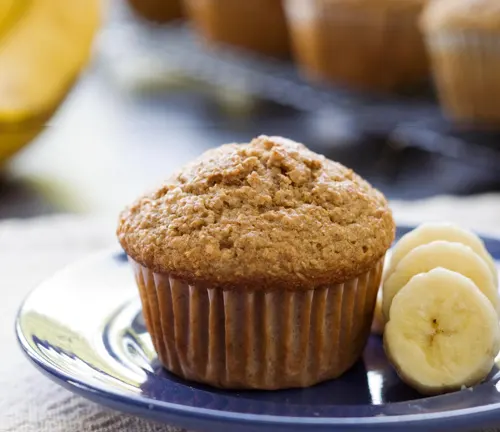
Desserts
Banana Ice Cream: Freeze bananas and blend them until creamy for a simple, healthy ice cream alternative.
Banana Pudding: Layer bananas with vanilla wafers and pudding for a delightful dessert.
Banana Foster: A decadent dessert where bananas are caramelized in a butter and brown sugar sauce, often flambéed with rum.
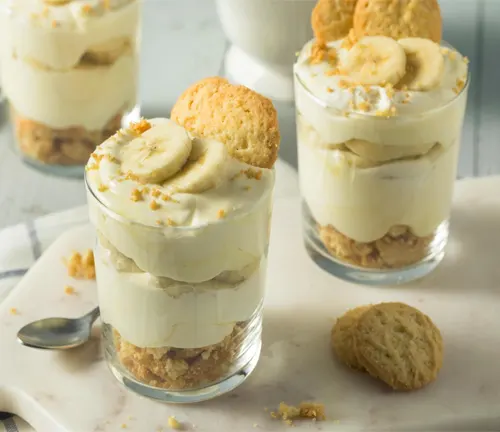
Savory Dishes
Banana Curry: Use bananas in a sweet and spicy curry, paired with chicken or vegetables.
Banana Fritters: A popular snack in many cultures, these are battered and fried bananas, often served with spicy or tangy sauces.
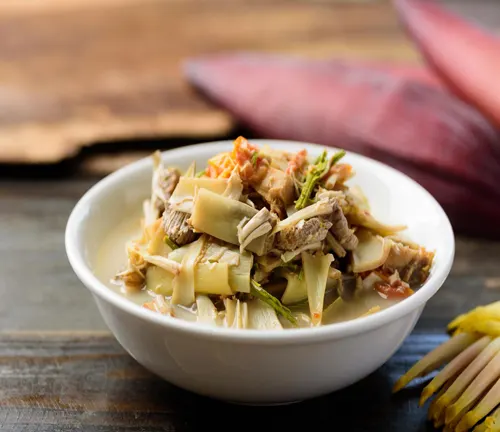
Healthy Snacks
Banana Chips: Slice bananas thinly and bake or dehydrate them for a crunchy snack.
Peanut Butter Banana Bites: Slice bananas, spread peanut butter between two slices, and freeze for a quick snack.
Banana Sushi: Spread a tortilla with nut butter, place a banana on top, roll it up, and then slice into sushi-like pieces.
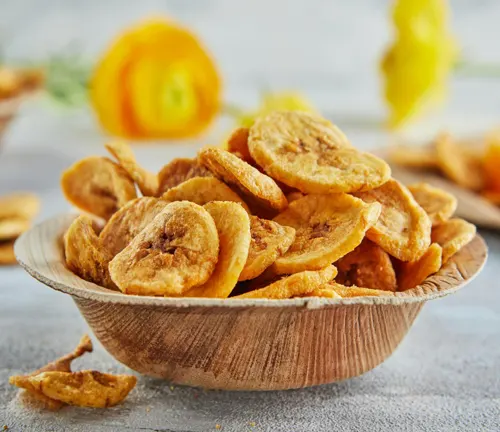
Drinks
Banana Milkshake: Blend bananas with milk and a scoop of ice cream for a classic milkshake.
Banana Tea: Boil banana peels in water for a calming tea rich in potassium and magnesium.
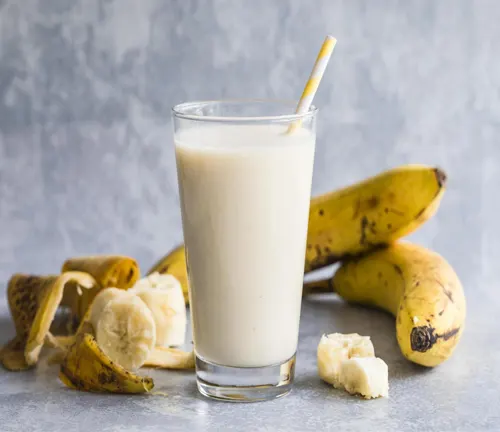
Salads
Fruit Salad: Mix banana slices with other fruits and a squeeze of lime or lemon juice for a refreshing salad.
Banana Waldorf Salad: A twist on the classic Waldorf salad using bananas, apples, celery, walnuts, and a light dressing.

The Economic Importance of Bananas
- Global Banana Trade: Bananas rank among the top agricultural exports globally, with the industry controlled by a few multinational corporations. These companies oversee the entire supply chain, from tropical regions to global markets, encompassing aspects like transportation, ripening, and retail.
- Impact on Local Economies: In banana-producing regions, primarily in Latin America, Africa, and Southeast Asia, the industry is a vital source of employment and income, especially for small-scale farmers. These farmers’ livelihoods largely depend on the export market, making them sensitive to global price fluctuations and demand.
- Economic Challenges: The banana industry, despite its profitability, faces challenges such as market control by large corporations leading to potential exploitation of smaller producers. The reliance on bananas as a primary export makes economies susceptible to market instabilities and crop diseases like the Panama disease.
- Sustainability and Fair Trade: Recent trends favor sustainable production and fair trade practices, focusing on fair compensation for small-scale farmers and environmentally friendly farming methods. Fair trade initiatives aim to create better trade conditions and encourage sustainable agriculture, contributing to the stability of banana-producing economies.
- Diversification: To mitigate risks associated with over-reliance on bananas, some producing countries are diversifying their agricultural sectors. This strategy aims to stabilize their economies and reduce vulnerabilities to market and environmental changes.
Conclusion
In conclusion, while banana trees require some attention and care, the process of growing them can be incredibly satisfying. By understanding the needs of the banana tree and providing the right conditions, you can enjoy the lush foliage and the delicious fruits right from your garden. Remember, patience and attention to detail are key to nurturing these magnificent plants from planting to harvest.
FAQs (Frequently Asked Questions)
- What is the best climate for growing banana trees?
Banana trees thrive in warm, tropical climates with consistent temperatures ranging from 75°F to 85°F (24°C to 29°C) and high humidity. - How much sunlight do banana trees need?
Banana trees require full sunlight for about 6-8 hours a day. They grow best in bright, direct sunlight but can tolerate partial shade. - What type of soil is best for banana trees?
They prefer well-draining, fertile soil with a pH between 5.5 and 7.0. Rich, loamy soils are ideal. - How often should I water a banana tree?
Banana trees need regular watering to keep the soil consistently moist but not waterlogged. In hot weather, they may require daily watering. - When is the best time to plant banana trees?
The best time to plant banana trees is in spring or early summer when the risk of frost has passed and temperatures are consistently warm. - How do I fertilize banana trees?
Use a balanced fertilizer rich in potassium, nitrogen, and phosphorus. Apply it monthly during the growing season. - Can banana trees be grown in pots?
Yes, dwarf varieties of banana trees can be grown in large pots or containers, provided they have enough room to grow and are cared for properly. - How do I protect banana trees from pests and diseases?
Regularly inspect your trees for signs of pests or diseases. Use organic or chemical treatments as necessary and maintain good cultural practices to prevent issues. - When and how are bananas harvested?
Bananas are harvested when they are still green but fully sized. Cut the entire stalk from the tree and let the bananas ripen off the tree. - How long does it take for a banana tree to start producing fruit?
Most banana trees will start producing fruit within 9-12 months after planting, depending on the variety and growing conditions.

Kristine Moore
Forestry AuthorI'm Kristine Moore, a seasoned garden landscaping professional with over 30 years of experience. My extensive career has been dedicated to transforming outdoor spaces into stunning, sustainable landscapes. With a deep understanding of horticulture, design principles, and environmental stewardship, I have become a respected figure in the field, known for creating harmonious, visually appealing, and eco-friendly gardens. My commitment to excellence and continuous learning in landscaping trends and techniques has solidified my reputation as an expert in garden design and implementation.
7 comments
Very interesting process. Thank you a lot.
M S Geremew
February 27, 2024 6:39 amI need notes of different crops including banana. Your best
Mkaga emmanuel
February 25, 2024 7:23 pm1. When harvesting, wear the worst clothes, banana sap IS THERE FOR LIFE. 2. Little wasps will invade before the bunch is ripe. Cut down and wrap with anything, eg old sheets, towels. The fruit will ripen as they hang. 3. Roots are very shallow, so have props to stop the 30 kg bunches toppling the plant over. 4. Get chickens. They eat the bugs and poo poo the roots.
Chris
February 24, 2024 9:15 amGood morning we're can I buy a banana plant from . Your garden looked beautiful
Laucina Meyers
February 24, 2024 4:24 amWhere can I get banana 🍌 seedlings around South Africa





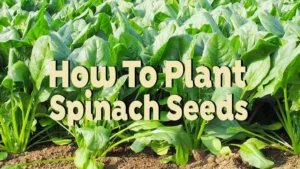
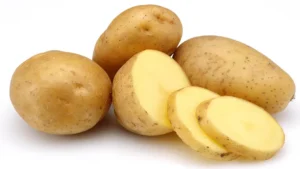



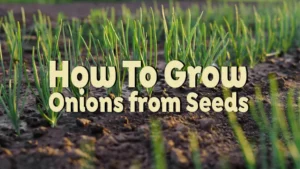

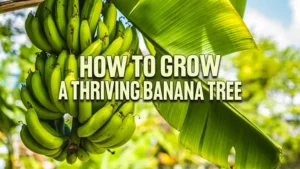
Great insights as I'm a beginner grower.Thank you
Dinny
March 10, 2024 4:37 amHi Dinny, You're welcome! I'm glad you found the information helpful. If you have any more questions or need further assistance as you start your journey in growing, feel free to ask. Happy gardening!
Kristine Moore
March 11, 2024 7:11 am